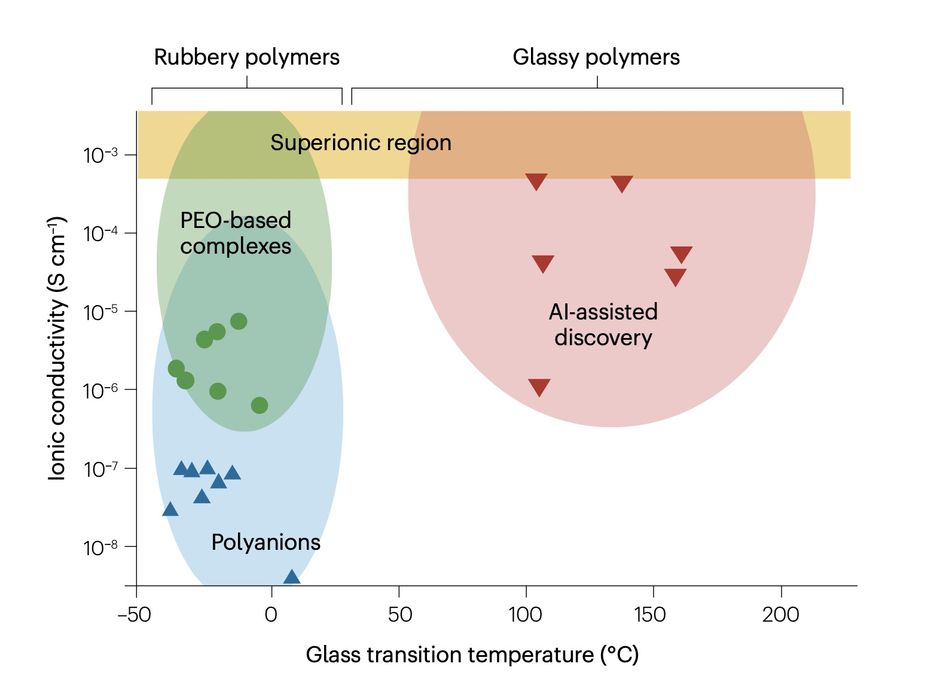
AI is being used to identify new, powerful polymers for 3D printing.
Researchers have been developing a method for automatically identifying new polymers with specific properties through AI technology. Today most new materials are developed through physical experimentation, which is time-consuming and expensive.
While the world of 3D printing is currently constrained to use only a handful of standard materials, there are a near infinite number of possible polymers: how many ways can molecules be made?
In that vast ocean of possibilities there are no doubt unknown materials with breathtaking properties. There are certainly ideal materials for the project you’re working on right now.
We just don’t know about these materials yet, and traditional approaches to find them could take eons. The research has identified a method to do this automatically. They explain:
“AI-powered workflows help to efficiently search the staggeringly large chemical and configurational space of materials, using modern machine-learning (ML) algorithms to solve ‘forward’ and ‘inverse’ materials design problems. A theme explored throughout this Review is a practical informatics-based design protocol that involves creating a set of application-specific target property criteria, building ML model predictors for those relevant target properties, enumerating or generating a tangible population of viable polymers, and selecting candidates that meet design recommendations.”
While their paper demonstrates using the protocol to find new materials for sustainability applications, there is no reason the same protocol could not be used for other polymer searches, including 3D print applications.
That all sounds good, but how, exactly, is this done?
It all begins with something called “polymer informatics”, the science of creating numerical representations of known polymers. This makes use of molecular arrangements, engineering properties and more, and effectively creates a database of polymer “fingerprints” that can be used with AI tools.
The researchers suggest there are two types of queries possible with this system: prediction of a given material’s properties, and finding polymers that could offer given properties. The latter is of most interest to us.
There has been much work on this topic in the past, but in the paper “Design of functional and sustainable polymers assisted by artificial intelligence”, the researchers extend the work tremendously:
“We then examine challenges and opportunities on the horizon, touching on complex scenarios involving composites, formula- tions and cross-linked polymers; the autonomous extraction of property data from the exponentially increasing literature using natural language processing techniques; and the use of computational–experimental information fusion and multifidelity methods to produce and leverage data covering ever-greater chemical spaces. Ultimately, transitioning from successful laboratory-scale synthesis to commercialization is the definitive validation of the real-world value of polymer informatics.”
In the paper the researchers explore quite a number of different ways to apply this technology in specific application scenarios. At top, for example, you can see how the AI tools were used to help identify new solid polymer electrolytes that might be used in batteries.

One application they explored involved PHA, a possible material for future FFF 3D printing that is fully biodegradable. We explored PHA’s potential in a previous story. Here we see their “pipeline” for identifying new PHA polymers.
Their exploration into AI-generated polymers seems feasible, as demonstrated by several experiments. However, they say there are still some barriers to overcome, including consistent data capture and more advanced simulation techniques.
They conclude:
“As AI-based materials intelligence ecosystems mature and evolve, they will enhance the capabilities of human researchers, driving efficiencies, accelerating discoveries and enhancing productivity. If nurtured appropriately, AI-assisted materials discovery may offer a future where the collective wisdom of intuition and experience is immortalized within the expert system, and shared and refined for the benefit of all.”
Work in this area is increasing, and could lead to a very interesting future, where new materials will be appearing almost on-demand.
Via Nature
